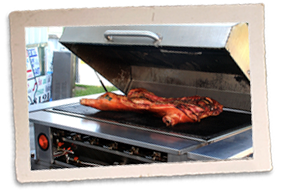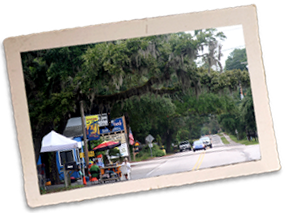 |
|
Articles & Essays
"Just Say Mac & Cheese: A deep dive into the history of a timeless favorite"
Published 02/01/19
West Virginia South (Beckley, WV)
|
A few months ago, I asked a friend what she was planning to make for her family’s Christmas dinner:
“I don’t know, but I’m not making that durn macaroni and cheese again. I made it for Thanksgiving already. I’m tired of it.”
But her husband was asking for it. Her grandchildren were pleading for it. In the end, there was compromise: she made herself and everyone else happy by having her daughter cook the macaroni and cheese.
For me, I would have been delighted to succumb to such critical acclaim, especially for a simple dish. Yet, no one in my family has ever begged for macaroni and cheese.
Macaroni and cheese in the Kraft blue box was the instant ramen noodles of my mid-1970s college years. My roommate and I could buy four boxes for a dollar, quickly stir up the packet of orange cheese-like powder with milk from the dorm snack bar and cook it on an illegal hot plate in our room, provided we didn’t trip a circuit breaker. (“We’re using the hot plate! Don’t turn on any hair dryers!”)
After I got married, I graduated to the deluxe version (only the best for the new hubby), which contained a can of cheese-like stuff instead of the powder, and was cheap and not challenging for a newbie cook. After baking several pans of it, my husband declared that he actually didn’t like macaroni and cheese very much. It led me to suspect that he wasn’t really a southerner, but I suppose being diagnosed with a dairy allergy is a good enough excuse..
For such a simple thing, macaroni and cheese contains multitudes. It can be both a main dish and a side dish (many meat-and-three diners list it as a vegetable choice), or both an example of processed food technology and homemade comfort goodness. Also, it illustrates the effects of culture and immigration.
My friend is African American, and macaroni and cheese holds a different place in black culture than it did in my growing up. Adrian Miller writes in his book “Soul Food: The Surprising Story of an American Cuisine One Plate at a Time” that the dish’s identity has morphed through more than two centuries of existence: “Macaroni and cheese became ‘mac ’n’ cheese,’ a soul-food favorite, because African American cooks have been called on to make the dish in wealthy and poverty-stricken kitchens alike.”
Thomas Jefferson ate a version of the dish in France at the tables of the wealthy and became so enamored of it that he had his Monticello chef, the enslaved James Hemings, learn to prepare it. Antebellum southern cookbooks contained recipes for versions of macaroni and cheese, all of which would have been treats for special occasions, because cheese and pasta were hard to get and costly, and prepared by enslaved cooks, Miller writes.
By the late 1800s, macaroni and cheese was on the move, drifting to working-class meals. Italian immigrants to the U.S. opened pasta factories, making macaroni cheaper and easier to find. Coincidentally, at that time Italians and African Americans often lived near each other in large cities, so it’s reasonable to consider that cross-cultural cooking took place.
In 1937, the blue box that fed a thousand study breaks in my dorm was introduced, taking advantage of the invention of processed cheese. Also, Miller writes, recipes for from-scratch macaroni and cheese began appearing in African American community cookbooks, showing how the dish had established a place in the culture as a way for cooks to exhibit their skills.
Kraft marketed its version as a cheap meat substitute during World War II food shortages, and its popularity soared.
During anti-poverty efforts in the 1960s, macaroni and cheese made from government surplus processed cheese became a staple on school lunch menus, Miller writes.
From a nutrition point of view, there are good reasons that children love it. “Kids can develop very strong food aversions that might last six months or a year, when they might not like crunchy things and so forth. Macaroni and cheese is creamy and warm, and there are no sharp edges or chewy parts if they have sore mouths from losing teeth. And it doesn’t have a strong flavor,” says Leah McGrath RD LDN of Waynesville, N.C., corporate dietitian for Ingles markets.
Today, macaroni and cheese can be dressed up with lobster, truffles and exotic cheeses, and even be deep fried and put on a stick. Or it can still be mixed from the blue box to satisfy late-night hungries. It can be a food of celebration or of survival. It certainly helped me survive botany finals.
Return to Articles & Essays |
|
|
|















